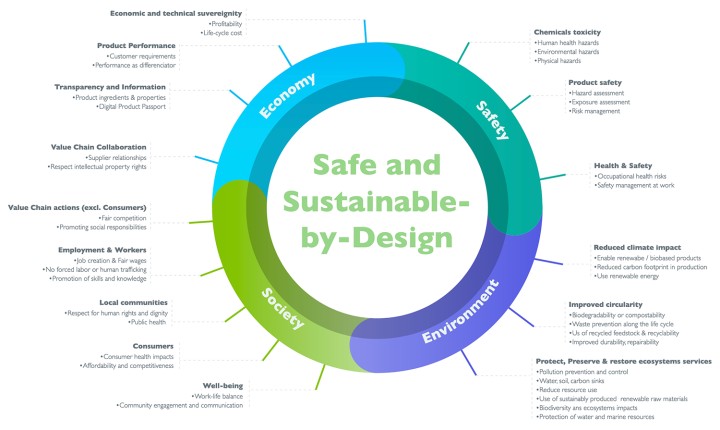Safe and Sustainable by Design (SSbD): An instrumental approach towards a sustainable future for chemicals
As the world races to meet the ambitious targets of the European Green Deal, the chemical industry is at a crucial crossroads. To ensure the transition to a climate-neutral, circular and toxin-free society by 2050, the European Commission has introduced the concept of Safe and Sustainable by Design (SSbD). This approach, rooted in the Chemicals Strategy for Sustainability, represents a paradigm shift in the way chemicals, materials and processes are developed, assessed and regulated. But while the benefits of SSbD are clear, the road to implementation presents significant challenges for companies. Understanding these difficulties - and how to overcome them - is critical to ensuring that this transformative strategy delivers on its promises.

Why SSbD matters
At its core, SSbD is a preventative approach. It integrates safety and sustainability considerations from the outset of new chemicals,materials and processes, ensuring that their potential risks to human health and the environment are minimised while still meeting functional needs. It's not just about replacing harmful chemicals, materials and processes, it's about rethinking the entire design process to ensure that each new chemical, material or process is consistent with broader sustainability goals.
The importance of SSbD is magnified when we consider the overarching goals of the European Green Deal. Europe aims to achieve climate neutrality, reduce pollution and move towards a more circular economy. Chemicals play a critical role in many industries, including construction, textiles and energy. Transforming the way chemicals are designed and used is therefore crucial to the overall success of this green transition.
A strategic framework for innovation
The European Commission, in collaboration with key stakeholders such as the European Chemical Industry Council (Cefic), has developed a robust framework for assessing the safety and sustainability of chemicals, materials and processes. This framework provides guidelines for assessing substances throughout their life cycle, from raw material extraction to end-of-life disposal. It takes into account hazards, risks, environmental impacts and socio-economic factors to ensure that new innovations don't just solve today's problems, but are also sustainable for the long term.

Challenges and opportunities
While SSbD offers clear benefits, companies in the chemical and plastics industry can face a number of hurdles when trying to integrate this approach into their innovation processes. Integrating safety and sustainability into the earliest stages of product or process design often means rethinking long-established R&D processes. SSbD requires a thorough assessment of both safety and sustainability dimensions, including the evaluation of chemical hazards, environmental impacts and socio-economic factors throughout a product's lifecycle. For many companies, especially smaller ones, this is a daunting task. The technical expertise required to conduct these assessments - such as advanced toxicological studies and life cycle analyses - is often in short supply.
Investment in data infrastructure is also crucial. Companies should focus on improving their internal data management systems and work with regulators to develop accessible and interoperable databases. The European Commission has also emphasised the importance of the FAIR data principles (Findable, Accessible, Interoperable and Reusable), which should be integrated into companies' R&D processes.
One of the most challenging aspects of SSbD is managing the trade-offs between safety, sustainability and performance. Often, a chemical that scores high on sustainability may have trade-offs in other dimensions, such as cost or functionality. For example, a more sustainable alternative to a widely used chemical may be less effective or more expensive, creating barriers to market acceptance. While some trade-offs are inevitable, companies can sometimes focus on incremental improvements, continually refining their products to balance functionality with safety and sustainability.
While the European Commission has introduced the SSbD framework, regulatory changes are still evolving, which can also lead to uncertainty.
Despite these challenges, SSbD represents a unique opportunity for chemical and plastics companies to future-proof their operations. By adopting SSbD, companies can reduce their environmental footprint, improve product performance and gain a competitive advantage in a market that increasingly values green solutions.
|
Benefits of adopting SSbD
|
A call to action for industry
As the European chemical industry faces the challenges of the Green Deal, SSbD offers a way forward. Companies that embrace this approach will not only comply with new regulations, but also lead the way to a more sustainable future. By embedding safety and sustainability at the heart of the innovation process, these companies can ensure that they are part of the solution, not the problem. The journey may be complex, but the rewards are clear: safer, more sustainable products that benefit not only companies but society as a whole. The chemical industry has the opportunity to be a key driver of the green transition, and SSbD provides a roadmap to get there.